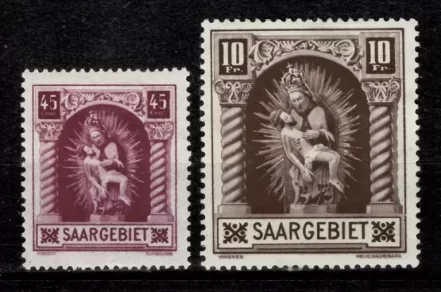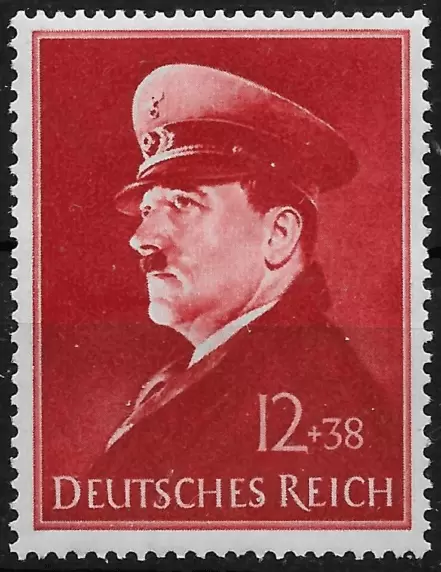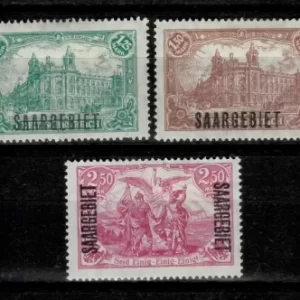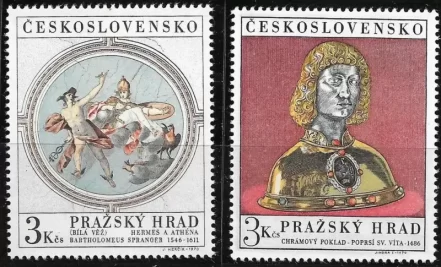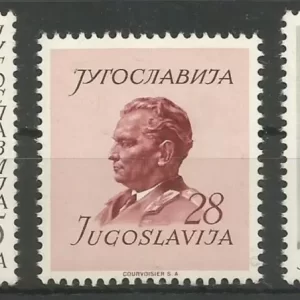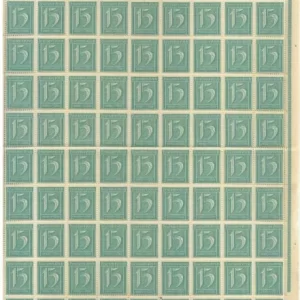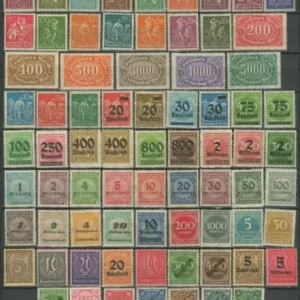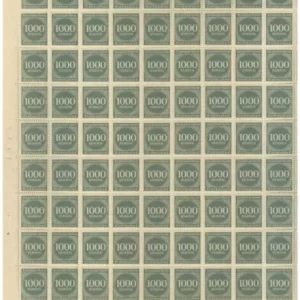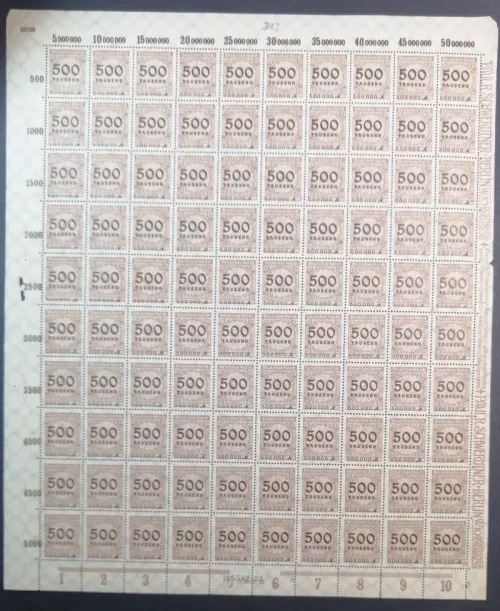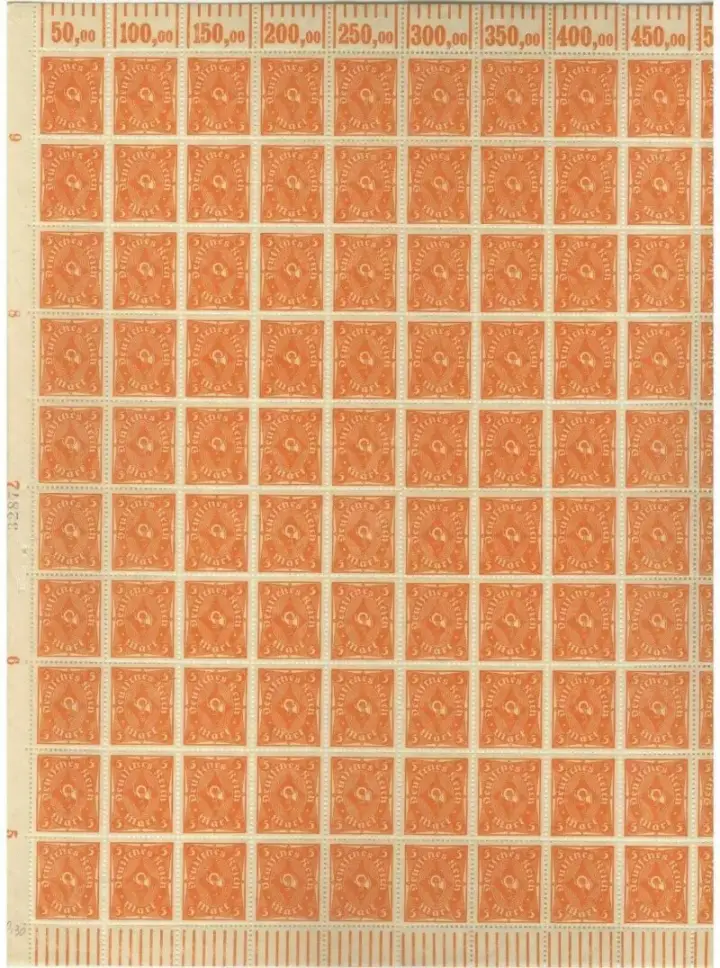Germany Saar stamps year 1925 Saargebeit Madonna of Blieskastel set MH
The “Madonna of Blieskastel” issue from the Saar Territory (Saargebiet) is quite popular with collectors of both German and religious-themed stamps.
This definitive set, issued in 1925, featured a famous baroque wooden sculpture of the “Our Lady with the Arrows” (Gnadenbild Unserer Lieben Frau mit den Pfeilen), which is kept in the Schlosskirche (Palace Church) in Blieskastel.
🖼️ Stamp Details
| Denomination | Description | Michel Catalogue No. | Issue Date |
| 45 Centimes | Madonna of Blieskastel | MiNr. 102 | April 9, 1925 |
| 10 Francs | Madonna of Blieskastel | MiNr. 103 | April 9, 1925 |
- Entity: Saar Territory (Saargebiet), under League of Nations administration.
- Design: A high-quality engraved image of the famous sculpture. The stamps are relatively large and printed in two colors, which was common for higher-value stamps of the era.
- The 45 Centimes is typically seen in red and blue-green.
- The 10 Francs is typically seen in dark brown and light blue (or black-brown).
- Significance: This set was issued as a part of a larger definitive series but is often listed separately due to its specific religious motif.

